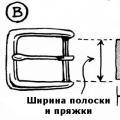DIY paper crown. Template for cutting
How to make the crown of the Russian Empire with your own hands is an adjective question, i.e. it is secondary and is attached to the main question. And the main thing is to come up with what to make a crown at home, from what improvised materials.
Google to the rescue - and crowns of this shape were taken as a sample:
For information: the shape of the crown is two large hemispheres, symbolizing two parts of the world - Europe and Asia, West and East, united within the Russian Empire.
Gold, silver and diamonds are no help to us in our business. We looked around: what are the suitable materials in our household. Papier-mâché, wire frame - zamoroka. And here is a plastic 5-liter bottle! This is just a find! The top of the bottle is very reminiscent of the shape of the crown.
We take a plastic 5-liter bottle as the basis for the crown of the Russian Empire.
We cut off the neck and bottom, leaving the height of the desired shape 20 centimeters (we measure the height with the head that will wear this crown). We cut into two parts.

We attach a cardboard rim to the bottom - we attach it to the plastic directly on sewing machine(rare stitch). From the same bottle we cut out a strip of plastic for the central arc of the crown; we attach regilin to the strip along the edges (this is a narrow ribbon with line inserts). We sew the arc to the rim.

We sew a cross from a double regilin. To fix it on the crown, we cut the plastic in the right place, insert the ends of the regilin, on the wrong side we spread the ends in different directions and sew them manually to the plastic.
One more thing: we make a ring from a thin but rigid steel wire (we bend it into an oval, according to the shape of the head) according to the size of the crown rim and manually sew it from the outside along the edge of the rim. Understandable for what? Cardboard is cardboard, and the metal ring will keep the base of the crown from deforming.

This stage of work is completed by pasting the rim of the crown with black calico.

We paint with an aerosol can in gold color and look what happened:
before and after

After painting, all the reliefs came out very clearly plastic bottle. Not order.
We take polyethylene foam (this is a heater from hardware stores; it is also used as packaging in household appliances). We cut arcs from polyethylene foam of the required size, which we glue (adhesives for polyethylene "Titinik", "Master") between the ribbons on the crown. The thickness of the polyethylene foam sheet is 1 cm. When painting, the pores in the end sections are beautifully distinguished, and the surface resembles metal.
We first paint the polyethylene foam inserts with a black spray, and spray gold on top.

Here's what happened. Note that struts of steel wire, painted black, are inserted inside the crown (when the crown is on the head, they are not visible). This necessity had to be resorted to in order to push the hemispheres further apart.
A strip of Velcro (its soft part) is glued inside the rim in order to better hold the crown on the head.

Now comes the most pleasant moment - proceed to decorating the crown. You can’t do it with improvised materials - we get all the rhinestones and stones from the stash. We think over the composition of the location of the decorations and glue (in some places we sew) them on the crown. We have these - plastic rhinestones, monisto with large silver hemispheres on a ribbon, Swarovski ribbon rhinestones.

Result. Do-it-yourself crown of the Russian Empire from improvised materials is ready.



Something has recently stretched into crowns ... Today we are making two more crowns, this time crowns for the king and queen.
If we made the crown of the Russian Empire from a plastic bottle and polyethylene foam, then we prepared thick cardboard 2-3 mm thick for the royal crown, which can be bent without leaving creases.
royal crown in ready-made looks like that:

Crown pattern, about 58 head size:

Of course, the teeth of the crown can be drawn in any shape you like.
We first cut out the crown from whatman paper, try it on, adjust the height of the crown.

Cut out a piece of cardboard crown. We glue it with an overlap (did you forget about the gluing allowance?).
We are preparing a glue gun with a large supply of rods, various ribbons, cords. The color of the braid does not matter - everything will be painted in gold. We glue the cords and braid on the crown with a glue gun (or universal Moment-Crystal glue) as your fantasy tells you





We stick all sorts of different beads, pendants, buttons, brooches - everything that is at hand. It is desirable that the beads were assembled on a thread, so it is more reliable than gluing them one at a time.

When the decorative fantasy runs out, you can paint the crown. Primer first, then paint with gold. I pre-painted with black spray paint, because. I wanted to give the crown some antiquity. You can prime with white paint - then the gold on the crown will appear especially brightly.
Do not be alarmed that this photo shows a different crown. This is the crown of the queen, which will be discussed later. The principle is the same.

Now paint with golden spray paint.

Without further ado, I decorated this crown with glue-based acrylic rhinestones.


The crown for the king is ready. Oops! I almost forgot to show the inside of the crown.

I really like this wrong side: the rivets are just like real ones. But they didn’t turn out from a good life: when I bent the cardboard blank of the crown into a ring, my cardboard gave a hall in one place. I strengthened this hall by gluing a piece of cardboard on the inside of the crown. At the same time, of course, I had to stick them evenly around the entire perimeter of the crown. Then, with a glue gun, you need to quickly and quickly set the dots on these inserts, and then even faster (until the glue has cooled down) with something sharp like a thin screwdriver or the tip of a knife, push the dots in the middle. This is how the forged rivets on the crown turned out.
At the bottom, on the inside of the crown, I have a soft part of the Velcro tape glued - this is so that the crown does not crawl on the head.
Now about the crown for the queen.
The following crown shape was taken as a basis:

The process of making this crown is no different from making the royal crown. But in decorating the crown for the queen, more expensive rhinestones, pearls and glue semi-pearls, sequins were used. In total, there are 5 pentagons on the crown, highlighted with a glued cord. Between the pentagons, horizontal reliefs are "drawn" with a glue gun.
Finished crown for the queen:



Good luck to everyone in your work!
You are heavy, Monomakh's hat - said Boris Godunov, referring to the severity of the responsibility of the royal power. The most famous royal headdress, like all crowns and imperial crowns, was indeed heavy. The big imperial crown was not easy either, with which Emperor Nicholas I was crowned king on August 22, 1826 in the Assumption Cathedral of the Moscow Kremlin. What were they - the main attributes of power in the Russian state?
royal crowns
In pre-Petrine times, sovereigns were crowned with special crowns - hats. The most famous of them Cap of Monomakh, as it turned out, it has nothing to do with Vladimir Monomakh, the tact was made 200 years after his reign in Bukhara. Its first owner was Ivan Kalita, to whom he presented it together golden horse harness Golden Horde Uzbek Khan.Kazan Hat- a golden crown, made according to legend by jewelers of the cut Kazan Khanate, for Ivan the Terrible.
Astrakhan Hat - crown Big outfit, made by the Kremlin jewelers, belonged to Tsar Mikhail Romanov. She received the name Astrakhan in connection with the conquest of the Astrakhan Khanate. This crown can be seen on the coat of arms of the city of Astrakhan.
After the death of Tsar Alexei Mikhailovich, the young Ivan and Peter were placed on the throne. Two kings - two crowns made in the workshops of the Kremlin for each of them
Cap Altabasnaya (Siberian) and Cap Diamond - left the workshops of the Kremlin and are currently in the Armory.
The Diamond Cap and the Monomakh Cap of the second outfit were also made by the masters of the Moscow Kremlin for the future Emperor Peter the Great.
Imperial crowns
One of the first imperial crowns was the crown with which Peter I crowned Catherine I. Alas, only a frame remained of it, since subsequent Russian emperors used the diamonds adorning it at their discretion. Most of the stones from the crown of Catherine migrated to the imperial crown of Anna Ioannovna, along with large red tourmaline, which passed from one royal crown to another.Great Imperial Crown of the Russian Empire
A jewelry miracle that personified the imperial power in Russia from Catherine II to the last Russian Emperor Nicholas II ...
Commissioned by Catherine the Great for her coronation in 1762, she was created from a sketch George Friedrich Eckart and under the guidance Jeremiah Pozier in just two months. Only one condition was set by the Empress - the weight should not exceed 5 pounds. This crown was crowned for the kingdom by all subsequent emperors of Russia after Catherine II. After the October Revolution, the Crown served as collateral for Ireland for a $25,000 loan. Until 1938, the valuables were kept in the house of the mother of the Ambassador of Ireland, Harry Boland. The jewelry was returned to Russia in 1950 after following the loan repayment procedure. The large imperial crown is the main exhibit of the Diamond Fund.
Small imperial crown was created specifically for the coronation of Empress Maria Feodorovna, wife of Alexander II
But the most amazing story connected with Vladimir tiara, which got its name from the English form of the title of Grand Duchess Maria Pavlovna - The Grand Duchess Vladimir of Russia, who was the wife of Grand Duke Vladimir Alexandrovich, brother of Tsar Alexander III. Until 1920, the tiara belonged to Maria Pavlovna, who ordered it from jewelers in 1890. The Vladimir tiara was made of diamonds and pearls. Left together with the entire jewelry collection of the Grand Duchess during the revolutionary events in the safe of the Vladimir Palace in St. Petersburg, the tiara was taken out by British intelligence through diplomatic mail.
After the death of Maria Pavlovna, the tiara was bought by Queen Mary from Princess Elena Vladimirovna, Maria's daughter.
It was Queen Mary who came up with the idea to improve the tiara in such a way that pearl pendants were replaced by emerald ones so that it could be worn with different outfits. The beloved tiara was inherited by the granddaughter of Queen Mary - Elizabeth II, who gave it vilify Princess Diana ... Elizabeth II herself wears the Vladimir tiara during unofficial solemn events as a replacement for the official royal crown, but that's another story - the history of the British crowns ...
 Yuri Loza about the song: “We will never be brothers” (video) We will never be brothers either
Yuri Loza about the song: “We will never be brothers” (video) We will never be brothers either How to attach a guitar strap
How to attach a guitar strap One child is good, but two is better
One child is good, but two is better